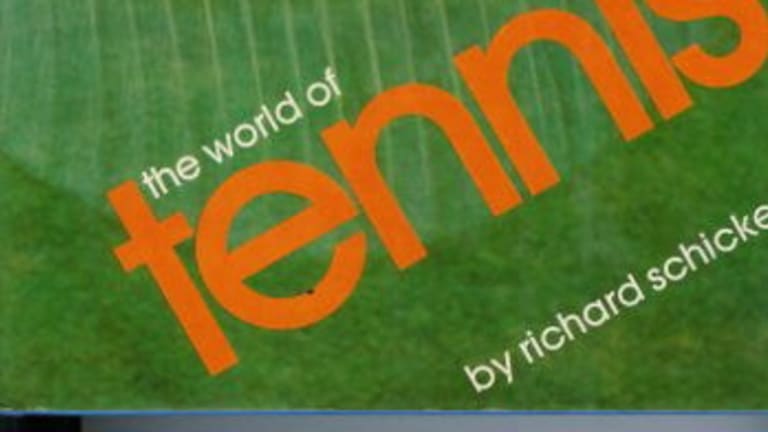Have you ever read a book that, once you finished it, made you wonder: What did I do, what did I think, before I read that? Now that I ask the question, I’m not completely sure that I ever have. There have been plenty of books I’ve loved at the time—Brave New World in 9th grade, The Red and the Black in 12th, Fear and Loathing in Las Vegas and Slouching Toward Bethlehem over a college summer, to name just a tiny fraction. But as far as changing the way I thought, the one that comes to mind at the moment was a chance high school library encounter with Greil Marcus's rock-critical classics Mystery Train and Stranded.
I don't think any tennis book has ever had that kind of effect on me, but there were three that I read for the first time this past year that did make me ask myself: How did I think I knew anything about the history of this sport before I read that?
I’ll start today’s second tennis-reading list with those three excellent books, and move on from there.
My Life with the Pros, by Bud Collins (1989)
Why is this, Collins’s 1989 memoir of 40 years covering the game, not mentioned with McPhee and David Foster Wallace when people talk about enduring tennis writing? More to the point, why does it cost exactly one penny on Amazon today?
Maybe it’s Bud’s folksy-corny TV persona, or his sometimes too-cute way with a phrase or a nickname. Maybe it’s all of his crazy talk in the early chapters here about Badgers (ITF members), Vultures (agents), Hares (promoters), and Wise Old Owls (not sure who they are) to describe the various conflicting players in the early days of the Open era. Still, you won’t get a tennis history that’s more fun, and more first-person. Bud was the game’s Zelig: He was present at the first big pro tournament of the 60s, at Longwood, that helped turn the tide toward Open tennis (he actually had a hand in getting it off the ground); he’s the reason we know anything about the zany, and equally crucial, Newport pro event thrown by Jimmy Van Alen in 1965; he covered the first Open tournament, in Bournemouth, the first Open Wimbledon (as the only American journalist). The list goes on, from the infamous U.S.-Romania Davis Cup final of 1972 to the Battle of the Sexes to the War of 18-16 to everything since. It’s all here, including some events that weren’t epochal—a Davis Cup tie in the Czech Republic in 1971 makes for one of my favorite chapters—but which Bud brings to life in his friendly, humble, breezily word-slinging way.
Open Tennis: 1968–1989, by Richard Evans (1989)
This memoir, released the same year as Collins’, is essentially Evans’s version of the same story, and he tells it with just as much enthusiasm and insider’s knowledge. (It's also, sadly, worth the same on Amazon: 1 cent.)
Evans's writing style, perhaps befitting a Brit, is punchier and at times starchier than Bud’s easy-quipping way. A revolutionary at heart, Evans had no time for the ILTF old guard, whom he refers to as “blinkered buffoons.” If you want to learn about the roller-coaster ride that the sport went on from the time it opened up in 1968 to the Wimbledon boycott of 1973, Evans has the goods in vivid detail. The finest chapter is his reminiscence about an early WCT event in Bologna in 1971 that he still maintains “provided the best single week of sustained top-quality tennis that I have ever seen.” Laver, Rosewall, Newcombe, Ashe, Drysdale, and the rest: The old amateurs and the old pros were finally united, finally out in the open, finally being promoted, finally getting paid, and they fought and played like it was a new day. You can still feel the excitement of that dream-come-true moment.
Sporting Gentlemen: Men’s Tennis from the Age of Honor to the Cult of the Superstar, by E. Digby Baltzell (1994)
As you can gather from the title, this is an ambitious piece of cultural history. One of the working titles was John McEnroe and the Decline of Civilization, and Baltzell, a prominent sociologist and upper-crust Philadelphian who popularized the term WASP, does take a dim view of the professional sport that we see today—this book almost certainly sets the world record for use of the word "vulgar." But there’s no better or more sweeping single history of the sport before the Open era. It's so good that it will run you $2.14 on Amazon.
The Game, by Jack Kramer with Frank Deford (1979)
Nastase is “dumb.” Borg “looks like a guy walking around with a sandwich board on him.” Connors is a choker. Nobody measures up anymore for the cranky old champ, who tells his story, along with his own version of the story of tennis. The words are Deford’s, but in a neat trick of ventriloquy, the rambling voice is all Big Jake’s.
Portrait in Motion, by Arthur Ashe with Frank Deford (1974)
Deford shows off his deflty invisible ghostwriting skills again by helping Ashe create these diaries from his 1973 season. You finish thinking that there couldn’t have been many, or maybe any, athletes as smart and perceptive as Ashe.
